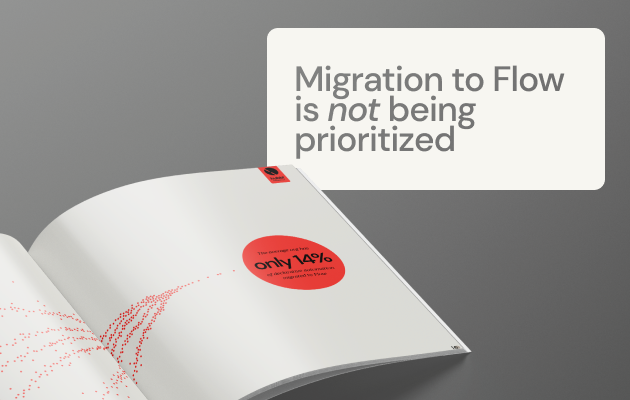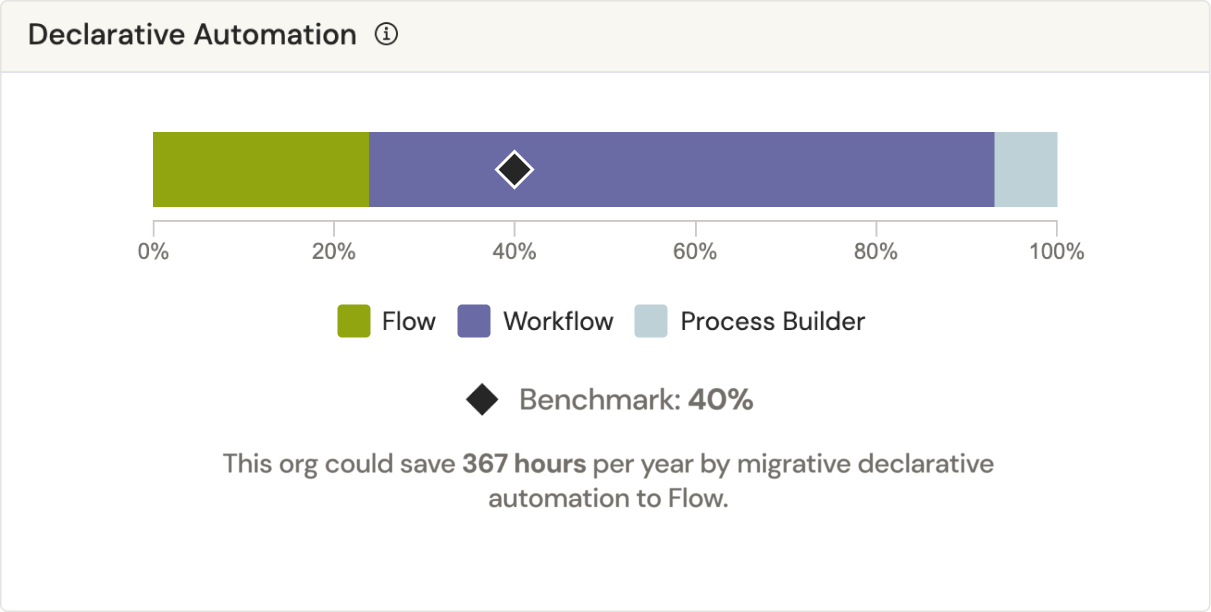
Salesforce Flow is the new point-and-click automation tool that is replacing Workflow Rules and Process Builder. As the migration deadline approaches, it's crucial to assess your organization's progress and prioritize the move to Flow.
Here's why:
Salesforce has blocked the ability to create new workflow rules and processes in Winter ’23 and Summer ’23, respectively. This means that migrating to Flow is no longer an option, but a necessity.
So what’s your strategy?
Keep all your working workflows and process builders until Salesforce pries them out of your org with a crowbar? While this may seem attractive to some, this approach does come with a productivity cost.
According to the 2023 edition of the Hubbl Diagnostics Benchmark Report, only 14% of declarative automation in the ecosystem is in Flow, which is only a 2% increase from the previous year. This slow pace of adoption means that many organizations risk falling behind their competitors.
Flows and triggers can significantly speed up your Salesforce org. In fact, our data shows that over 50% of Salesforce orgs could save more than 100 hours per year by migrating away from workflow and process builder. 6% of orgs would save over 1000 hours!
“Users like fast Salesforce orgs. Fast orgs increase adoption – and just make everyone happier. The Well-Architected team at Salesforce ran a detailed set of experiments on Flow runtime that shows, quantitatively, you need to rip out that old workflow and process to speed up your org – right now.” — Mike Bogan, Salesforce Ben Guest Author
The bottom line is if you're still using Workflow Rules and Process Builder, you're missing out on a significant opportunity to improve your organization's efficiency. The impacts can be far reaching including:
If you haven't already started migrating to Flow, here are some recommendations to help you get started:
.png)
Every organization is unique, with variations in the number of automations, how they are architected, and their automation types, all influencing the speed of saving records. To help, Hubbl Diagnostics offers a free Salesforce org monitoring feature. This allows you to gain insights into the workflow and processes that need to be migrated and track your migration to Flow effectively.
Within the Migration to Flow tracker, you’re also able to compare your progress with the rest of the ecosystem and see your predicted ROI of migrating to Flow. This helps you visualize how your org stacks up compared to the rest of the ecosystem and also provides some good motivation to keep moving forward!

Migrating to Salesforce Flow brings benefits such as improved employee adoption, enhanced customer experience, and a positive impact on your bottom line. Every day you wait to complete the migration, your org is slower than it needs to be. It is crucial to prioritize the move and take action now.